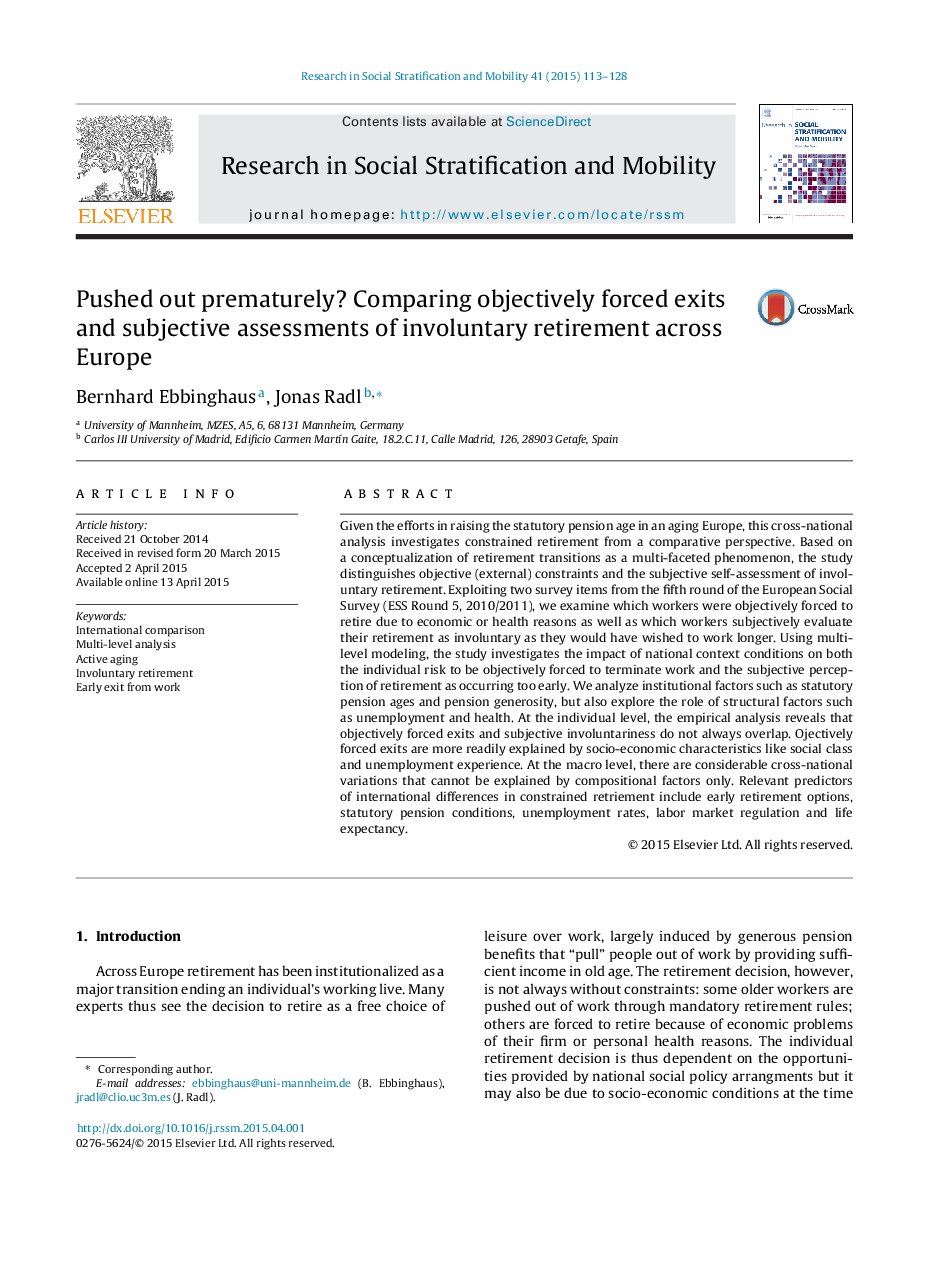| Article ID | Journal | Published Year | Pages | File Type |
|---|---|---|---|---|
| 999525 | Research in Social Stratification and Mobility | 2015 | 16 Pages |
•About every third retiree in Europe is prematurely pushed out of work.•Objectively forced exits and perceived involuntariness often do not coincide.•Self-assessments more elusive, less socially stratified than objective constraints.•Raised pension ages may lead to more constrained retirement transitions.•Stricter labor market regulation is associated with higher incidence of forced exits.
Given the efforts in raising the statutory pension age in an aging Europe, this cross-national analysis investigates constrained retirement from a comparative perspective. Based on a conceptualization of retirement transitions as a multi-faceted phenomenon, the study distinguishes objective (external) constraints and the subjective self-assessment of involuntary retirement. Exploiting two survey items from the fifth round of the European Social Survey (ESS Round 5, 2010/2011), we examine which workers were objectively forced to retire due to economic or health reasons as well as which workers subjectively evaluate their retirement as involuntary as they would have wished to work longer. Using multilevel modeling, the study investigates the impact of national context conditions on both the individual risk to be objectively forced to terminate work and the subjective perception of retirement as occurring too early. We analyze institutional factors such as statutory pension ages and pension generosity, but also explore the role of structural factors such as unemployment and health. At the individual level, the empirical analysis reveals that objectively forced exits and subjective involuntariness do not always overlap. Ojectively forced exits are more readily explained by socio-economic characteristics like social class and unemployment experience. At the macro level, there are considerable cross-national variations that cannot be explained by compositional factors only. Relevant predictors of international differences in constrained retriement include early retirement options, statutory pension conditions, unemployment rates, labor market regulation and life expectancy.
